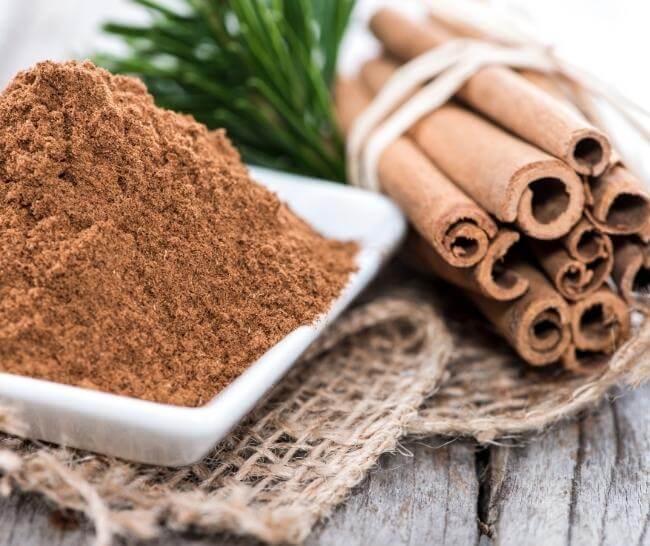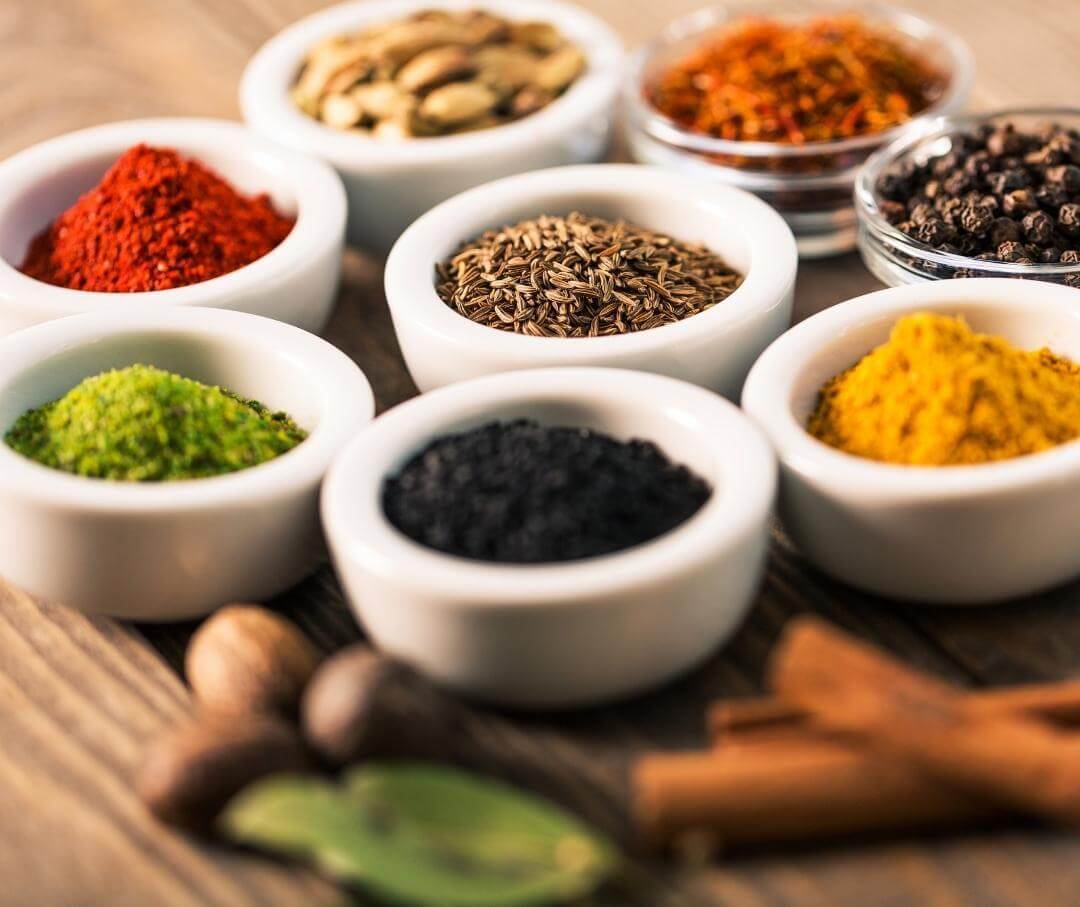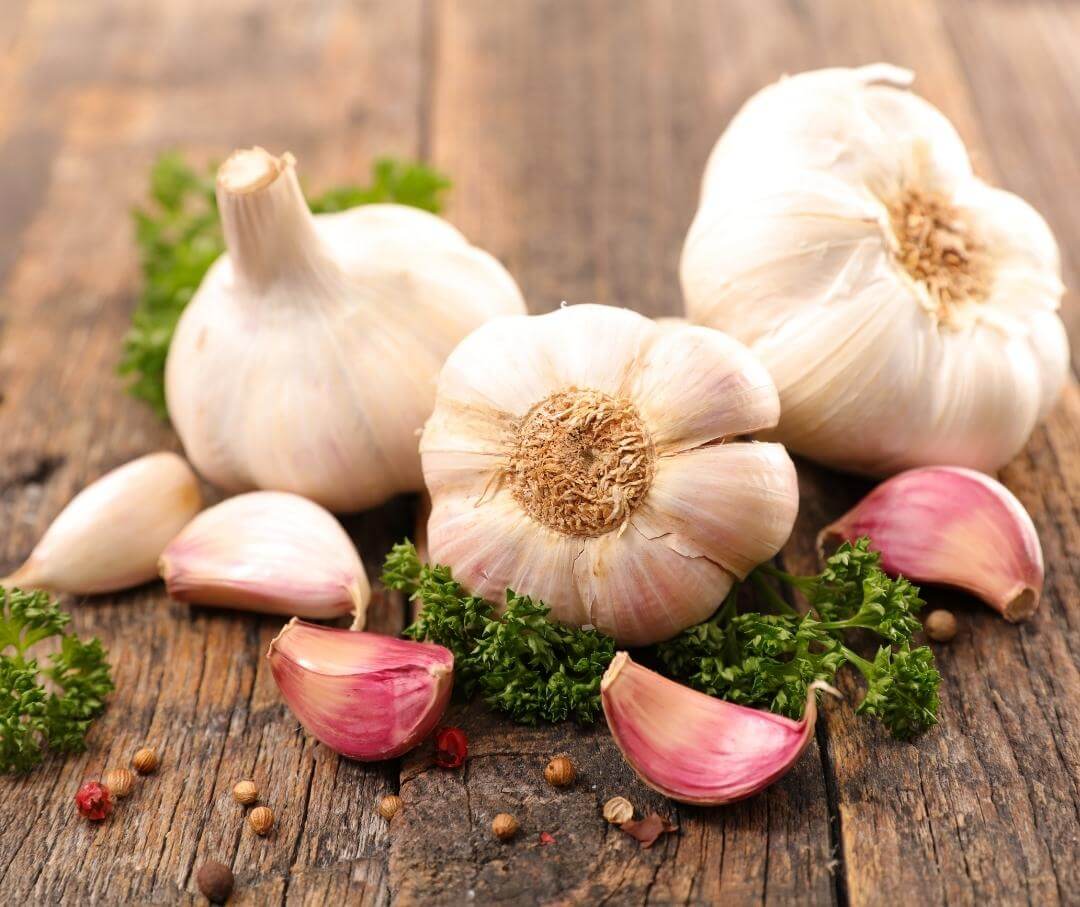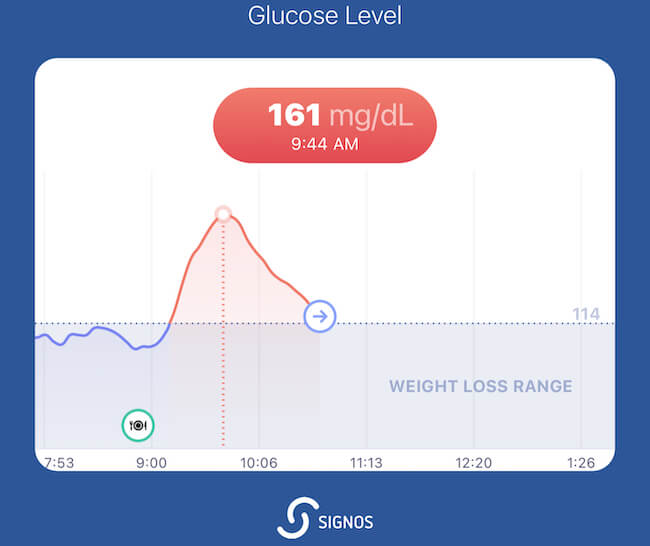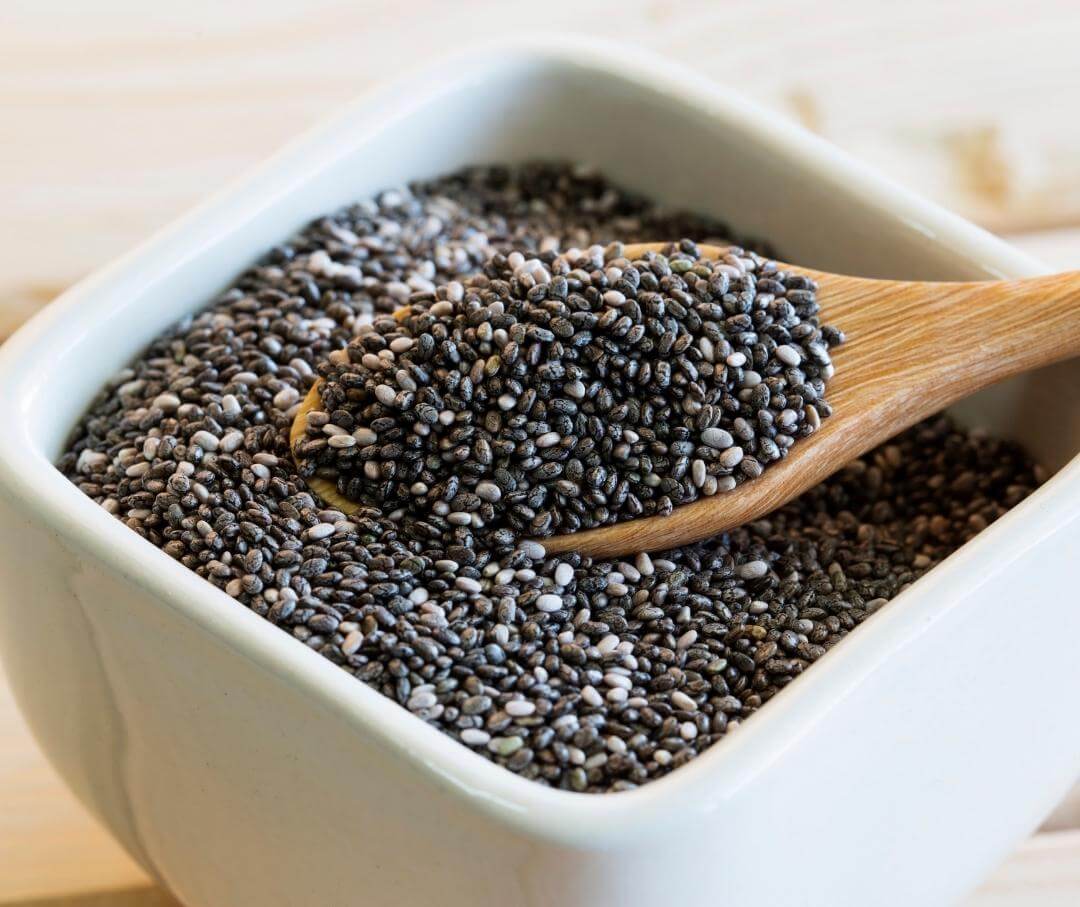Cinnamon, the spice that adds a distinct flavor to your holiday cookies and apple pies, has been used for medicinal purposes for centuries. In recent years, cinnamon has been studied for its potential to help regulate blood sugar levels (plus a few other health benefits, too), and the results are promising. Studies show that cinnamon may help lower blood sugar and increase insulin sensitivity.
Cinnamon Has a Long History of Medicinal Use
The spice you find in your kitchen comes from the Cinnamomum tree, and it's one of the most commonly used spices in the world.
There are a number of cinnamon species, but the two most common are Ceylon and Cassia. Ceylon has a much lower level of coumarin, a compound found in cinnamon that could damage the liver in high amounts (we will look at why this matters in more detail below).1
Cinnamon has been used for centuries in traditional medicine for its therapeutic properties.1 It's high in antioxidants, which help reduce damage from free radicals2. Free radicals are unstable molecules that can damage cells, leading to inflammation, but they are neutralized by antioxidants. Too many free radicals without the antioxidant balance can lead to oxidative stress.
Oxidative stress is a condition in which the body's cells are unable to repair the damage done by free radicals, and it's considered a root cause for many chronic conditions like heart disease and type 2 diabetes.3 4
Cinnamon is also full of many other compounds with medicinal properties that act as anti-inflammatories and exert other health benefits, including lowering blood sugar.1
<p class="pro-tip">Related: Ways to Reduce Inflammation (from an MD)</p>
How Can Cinnamon Lower Blood Sugar Levels?
Cinnamon could lower blood sugar levels by slowing down gastric emptying, or the rate at which food leaves your stomach and enters the small intestine.5 A slower gastric emptying rate means blood sugar levels are less likely to spike after a meal because it takes longer for the food to be digested.
Cinnamon also appears to increase insulin sensitivity, which is when your cells are better able to respond to the hormone.5 Insulin is responsible for lowering your blood sugar by transporting glucose from the bloodstream into your cells, where it can be used for energy.
Since cinnamon also has anti-inflammatory properties, it may reduce the risk of developing type 2 diabetes. Chronic inflammation is a significant risk factor for developing the condition.6
Cinnamon may also help lower blood sugar by acting like insulin. A compound in cinnamon called methylhydroxychalcone polymer (MHCP) may imitate insulin to help with lowering blood sugar and helping your cells use glucose for energy. 7
Test tube and animal studies also suggest that cinnamon could inhibit enzymes that help break down carbohydrates, which would slow down blood sugar and insulin spikes, but more research is needed on people. 8
<p class="pro-tip">Related: Aging, Blood Sugar, and Metabolic Health</p>
Human Studies Show Cinnamon May Help Lower Blood Sugar
Many of the studies on cinnamon and blood sugar focus on people with type 2 diabetes. While there have been mixed results, with some research finding no effect, multiple studies point to a positive impact.9 For example, one study found that cinnamon supplementation helped lower fasting blood glucose and cholesterol levels after 40 days in people with diabetes. 10
But there is also exciting research on cinnamon and blood sugar for people without diabetes. A study on healthy subjects found that adding cinnamon to rice cereal significantly delayed gastric emptying and lowered the glucose response after eating compared to those who consumed plain cereal without cinnamon.11 Drinking cinnamon tea also lowered the post-meal glucose response in another study on people without diabetes.12
A small study also found that healthy men who took a cinnamon supplement reduced their post-carbohydrate ingestion glucose response and improved insulin sensitivity. Even better, the positive effect lasted for 12 hours.13
<p class="pro-tip">Even though there have been mixed results in humans, the available evidence supports cinnamon's potential to lower blood sugar levels. And since it's easy to add to meals, it may be worth a try.</p>
{{mid-cta}}
Other Health Benefits of Cinnamon
Cinnamon is rich in polyphenols and antioxidants that offer many health benefits. Some of the ways cinnamon can improve your health include:
- Weight loss. Cinnamon's effect on blood sugar levels may play a role in weight control since spikes in blood sugar can lead to increased hunger and cravings. Supplementing with cinnamon led to greater weight and body fat losses compared to placebo in multiple studies.14
- Gut health. Many anti-inflammatory spices are helpful for gut health, and cinnamon is no exception. Research on people is needed, but recent animal studies suggest that cinnamon could protect the intestinal barrier and promote a healthy balance of bacteria in the gut. 15
- Cardiovascular protection. Cinnamon could be good for your heart. A meta-analysis of 35 studies found that cinnamon significantly improved cholesterol, triglycerides, and blood pressure—all risk factors for heart disease.16
- Cognitive health. Oxidative stress in the brain is linked to neurodegenerative conditions like Alzheimer's disease. Cinnamon's potent antioxidants may help protect brain cells from damage, but more research is needed.17
Using Cinnamon Supplements For Blood Sugar
Most studies on cinnamon use supplements, but there are a few that examine adding it to food. Adding cinnamon to food is an easy and delicious way to potentially lower blood sugar. If you like how cinnamon tastes you don't really need to use a supplement.
Generally, studies use a dosage of one to six grams—1 tsp is about four grams—but there isn't an agreed-upon dosage. A few studies that compared different amounts found that a lower dose was just as effective as the higher amount, so it may not be necessary to take large quantities of cinnamon.18
<p class="pro-tip">If you do choose to take a supplement, it's important to note that Ceylon is usually a better choice than Cassia because it contains less coumarin. As mentioned earlier, coumarin is linked to liver damage in large quantities and should be avoided if you have liver issues.</p>
Other reported side effects from taking a lot of cinnamon include headache, diarrhea, and skin irritation, but these are usually mild or from taking too much.
The safe upper limit for cinnamon is 0.1 mg/kg/day. 19 When taken at recommended levels, studies show cinnamon is generally safe.20
PSA: Cinnamon Can Interfere with Medications
If you take any medications, you may want to check with your doctor before adding cinnamon to your diet, especially if you want to take it as a supplement. Certain drugs that are hard on your liver could exacerbate the risk of liver damage from coumarin.
Also, if you take medications to lower your blood sugar, cinnamon could potentially enhance the effects of these medications and lead to blood sugar levels that are too low.
How to Include More Cinnamon in Your Diet
You don't have to become a baker overnight to start reaping the potential benefits of cinnamon. Just a half teaspoon a day could offer some health advantages. Here are some easy ways to add more cinnamon to your diet:
- Add a sprinkle to oatmeal, yogurt, or cottage cheese
- Stir into coffee or tea
- Use it to spice up your smoothies (and make them better for blood sugar)
- Make a healthy dipping sauce for fruit by mixing cinnamon with yogurt or nut butter. Here's a list of low GI fruits.
- Season roasted sweet potatoes, squash, or carrots with cinnamon before eating
- Make a spice rub for steak or chicken
- Include in a marinade for grilled fruit or vegetables. Here's a list of low GI vegetables.
Cinnamon and Blood Sugar: Key Takeaways
Cinnamon has a variety of health benefits, especially for your blood sugar levels. You can easily start to add cinnamon to your diet without the need for expensive supplements to get these benefits. Just use the spice in your foods. Check with your doctor if you take any medications to make sure there are no interactions.
Interested in seeing if cinnamon works for you? You can use a continuous glucose monitor (CGM) with your Signos app to see the real-time effects of cinnamon and other foods on your blood sugar. Try running a fun metabolic experiment on yourself by eating the same food but with different amounts of cinnamon to see how it affects you.
<p class="pro-tip">For Signos Users: How to run metabolic experiments with Signos</p>
- Item 1
- Item 2
- item 3
Topics discussed in this article:
References
<ol><li id="1">1. Gruenwald, J., Freder, J., & Armbruester, N. (2010). Cinnamon and health. Critical reviews in food science and nutrition, 50(9), 822–834. https://doi.org/10.1080/10408390902773052</li><li id="2">Hariri, M., & Ghiasvand, R. (2016). Cinnamon and Chronic Diseases. Advances in experimental medicine and biology, 929, 1–24. https://doi.org/10.1007/978-3-319-41342-6_1</li><li id="3">Liguori, I., Russo, G., Curcio, F., Bulli, G., Aran, L., Della-Morte, D., Gargiulo, G., Testa, G., Cacciatore, F., Bonaduce, D., & Abete, P. (2018). Oxidative stress, aging, and diseases. Clinical interventions in aging, 13, 757–772. https://doi.org/10.2147/CIA.S158513</li><li id="4">Tangvarasittichai S. (2015). Oxidative stress, insulin resistance, dyslipidemia and type 2 diabetes mellitus. World journal of diabetes, 6(3), 456–480. https://doi.org/10.4239/wjd.v6.i3.456</li><li id="5">Medagama A. B. (2015). The glycaemic outcomes of Cinnamon, a review of the experimental evidence and clinical trials. Nutrition journal, 14, 108. https://doi.org/10.1186/s12937-015-0098-9</li><li id="6">Esser, N., Legrand-Poels, S., Piette, J., Scheen, A. J., & Paquot, N. (2014). Inflammation as a link between obesity, metabolic syndrome and type 2 diabetes. Diabetes research and clinical practice, 105(2), 141–150. https://doi.org/10.1016/j.diabres.2014.04.006</li><li id="7">Jarvill-Taylor, K. J., Anderson, R. A., & Graves, D. J. (2001). A hydroxychalcone derived from cinnamon functions as a mimetic for insulin in 3T3-L1 adipocytes. Journal of the American College of Nutrition, 20(4), 327–336. https://doi.org/10.1080/07315724.2001.10719053</li><li id="8">Mohamed Sham Shihabudeen, H., Hansi Priscilla, D., & Thirumurugan, K. (2011). Cinnamon extract inhibits α-glucosidase activity and dampens postprandial glucose excursion in diabetic rats. Nutrition & metabolism, 8(1), 46. https://doi.org/10.1186/1743-7075-8-46</li><li id="9">Leach, M. J., & Kumar, S. (2012). Cinnamon for diabetes mellitus. The Cochrane database of systematic reviews, 2012(9), CD007170. https://doi.org/10.1002/14651858.CD007170.pub2</li><li id="10">Khan, A., Safdar, M., Ali Khan, M. M., Khattak, K. N., & Anderson, R. A. (2003). Cinnamon improves glucose and lipids of people with type 2 diabetes. Diabetes care, 26(12), 3215–3218. https://doi.org/10.2337/diacare.26.12.3215</li><li id="11">Hlebowicz, J., Darwiche, G., Björgell, O., & Almér, L. O. (2007). Effect of cinnamon on postprandial blood glucose, gastric emptying, and satiety in healthy subjects. The American journal of clinical nutrition, 85(6), 1552–1556. https://doi.org/10.1093/ajcn/85.6.1552</li><li id="12">Bernardo, M. A., Silva, M. L., Santos, E., Moncada, M. M., Brito, J., Proença, L., Singh, J., & de Mesquita, M. F. (2015). Effect of Cinnamon Tea on Postprandial Glucose Concentration. Journal of diabetes research, 2015, 913651. https://doi.org/10.1155/2015/913651</li><li id="13">Solomon, T. P., & Blannin, A. K. (2007). Effects of short-term cinnamon ingestion on in vivo glucose tolerance. Diabetes, obesity & metabolism, 9(6), 895–901. https://doi.org/10.1111/j.1463-1326.2006.00694.x</li><li id="14">Mousavi, S. M., Rahmani, J., Kord-Varkaneh, H., Sheikhi, A., Larijani, B., & Esmaillzadeh, A. (2020). Cinnamon supplementation positively affects obesity: A systematic review and dose-response meta-analysis of randomized controlled trials. Clinical nutrition (Edinburgh, Scotland), 39(1), 123–133. https://doi.org/10.1016/j.clnu.2019.02.017</li><li id="15">Qi, L., Mao, H., Lu, X., Shi, T., & Wang, J. (2021). Cinnamaldehyde Promotes the Intestinal Barrier Functions and Reshapes Gut Microbiome in Early Weaned Rats. Frontiers in nutrition, 8, 748503. https://doi.org/10.3389/fnut.2021.748503</li><li id="16">Kutbi, E. H., Sohouli, M. H., Fatahi, S., Lari, A., Shidfar, F., Aljhdali, M. M., Alhoshan, F. M., Elahi, S. S., Almusa, H. A., & Abu-Zaid, A. (2021). The beneficial effects of cinnamon among patients with metabolic diseases: A systematic review and dose-response meta-analysis of randomized-controlled trials. Critical reviews in food science and nutrition, 1–19. Advance online publication. https://doi.org/10.1080/10408398.2021.1896473</li><li id="17">Momtaz, S., Hassani, S., Khan, F., Ziaee, M., & Abdollahi, M. (2018). Cinnamon, a promising prospect towards Alzheimer's disease. Pharmacological research, 130, 241–258. https://doi.org/10.1016/j.phrs.2017.12.011</li><li id="18">Khan, A., Safdar, M., Ali Khan, M. M., Khattak, K. N., & Anderson, R. A. (2003). Cinnamon improves glucose and lipids of people with type 2 diabetes. Diabetes care, 26(12), 3215–3218. https://doi.org/10.2337/diacare.26.12.3215</li><li id="19">Abraham, K., Wöhrlin, F., Lindtner, O., Heinemeyer, G., & Lampen, A. (2010). Toxicology and risk assessment of coumarin: focus on human data. Molecular nutrition & food research, 54(2), 228–239. https://doi.org/10.1002/mnfr.200900281</li><li id="20">Gu, D. T., Tung, T. H., Jiesisibieke, Z. L., Chien, C. W., & Liu, W. Y. (2022). Safety of Cinnamon: An Umbrella Review of Meta-Analyses and Systematic Reviews of Randomized Clinical Trials. Frontiers in pharmacology, 12, 790901. https://doi.org/10.3389/fphar.2021.790901</li></ol>

